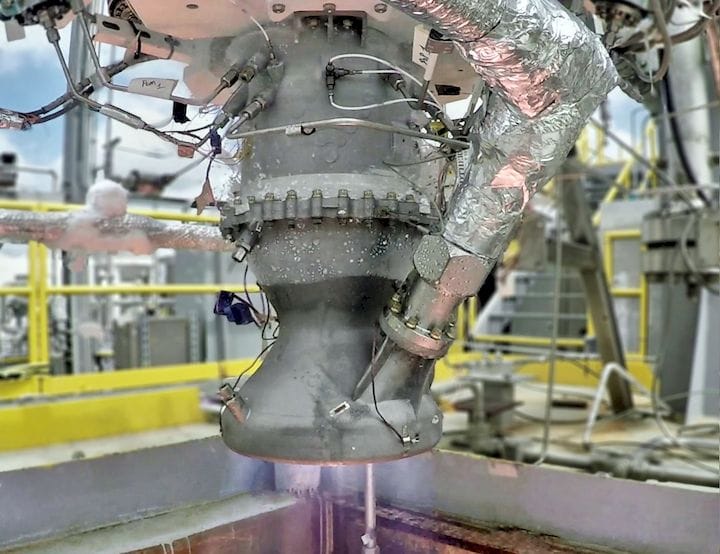![Relativity Space is operating at full thrust! [Source: Relativity Space]](https://fabbaloo.com/wp-content/uploads/2020/05/image-asset_img_5eb0909097f86.jpg) Relativity Space is operating at full thrust! [Source: Relativity Space]
Relativity Space is operating at full thrust! [Source: Relativity Space]
Relativity Space announced their first customer, Momentus.
The California-based rocket manufacturer has a unique strategy: making entirely 3D printed rockets. To do so they’ve developed a massive robotic 3D printing system they call “Stargate”.
Stargate is designed to 3D print the company’s two major products, the Aeon rocket engine and the Terran rocket. But it’s their approach that is so unique.
Here’s a video showing their approach:
Relativity Space Strategy
Readers of this publication will likely recall that one of the key advantages of 3D printing is that a complex part could be made in far fewer pieces due to the ability of 3D printing to produce virtually any geometry. This has allowed some manufacturers to reduce the number of pieces required for a part from, in some cases, hundreds, down to only a handful. Or only one!
This is a tremendous advantage as the effort required for assembly is dramatically reduced, and the quality of the parts increase — mainly because they are lower-weight due to the absence of connective bits, but also because the parts have fewer seams — fewer sources of failure.
But Relativity Space is taking that concept to the limit — they intend to 3D print the ENTIRE rocket, thus gaining those advantages over not just, say, the engine, but everything! It’s a radical approach.
Nevertheless, the company has raised considerable funding from investors and recently committed to a US$59M 3D printer farm to build components. This demonstrates a considerable amount of confidence by investors in the unusual strategy.
Relativity Space First Client
Now that confidence is further confirmed by the announcement that Relativity Space has secured their very first client, Momentus. Momentus is another space startup, focusing on cargo transportation using a unique water-based thruster technology.
Relativity Space Launch Risks
While Relativity Space has been testing their components frequently, now comes the biggest test: a full launch of their system, with client payload, in 2021, when Terran 1 launches. First launches are usually nervous affairs where stakeholders hold their breath and hope every detail was accounted for. If not, then, as Elon Musk puts it, a “rapid unscheduled disassembly” occurs.
Let’s hope that Relativity Space has everything in order and there’s no RUD in sight. Should something bad happen, that might dispel some other potential clients from using 3D print technology on their projects. On the other hand, a successful flight will be a big boost.
In more ways than one.
Via TechCrunch and Relativity Space

